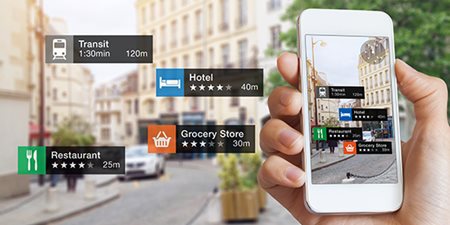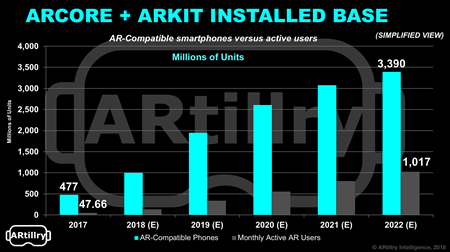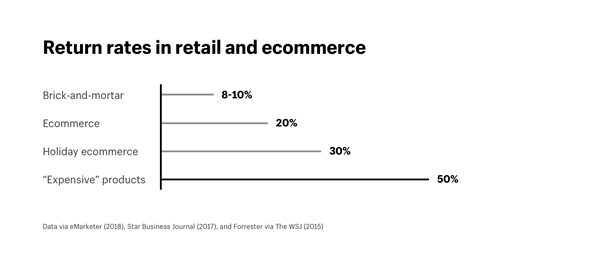Augmented and Virtual Reality are the Future of Web
With the breathless pace of technology development, businesses are continually looking for the next big wave to successfully take their digital experience offerings to the whole new level. Augmented Reality (AR) and Virtual Reality (VR), once the stuff of science fiction and fantasy, are becoming increasingly commonplace — moving well beyond the gaming realm into everyday use for education, marketing, and enterprise.
As brands jockey for position to be the stand-out amongst their peers in the next DX evolutionary process, there is an emerging need for platforms that facilitate AR and VR creation and integration. Taking those burgeoning steps into this visionary arena is a challenge for most businesses; however, more solutions are becoming available for those companies who are keen to incorporate AR and VR into their digital presence.
We connected with one technology firm that has been working towards making an AR and VR solution more accessible to the masses. Fectar recently launched a CMS that’s specialty focuses on bringing AR and VR to the web with a tool that is both effective and user-friendly. I spoke with Eugène Kuipers, CEO at Fectar Studios, to gain insight into best-use cases for their technology, and how Fectar got its start.
1. How long has Fectar been in operation?
"We — Rens [Lensvelt], Dennis [de Laat], and I — started October 2018. We were first looking into creating a CMS for the HoloLens from Microsoft. We saw companies struggling to create content for a US $5,000 device in order to learn more about the added value of AR for their company. In the middle of 2018, ARKit (iOS) and ARCore (Android) really took off in their development and installed base. Rens saw the possibility of creating an AR CMS for smartphones. Within one week, he had a Proof of Concept. That convinced us all to set up the new company — named SpotOn at that time‑ within two weeks. And that is how we started in October 2018. To date, it is estimated that globally, about 1.8 billion smartphones are able to support AR. And this number will grow to approximately 3.4 billion by 2022.”
HoloLens from Microsoft. We saw companies struggling to create content for a US $5,000 device in order to learn more about the added value of AR for their company. In the middle of 2018, ARKit (iOS) and ARCore (Android) really took off in their development and installed base. Rens saw the possibility of creating an AR CMS for smartphones. Within one week, he had a Proof of Concept. That convinced us all to set up the new company — named SpotOn at that time‑ within two weeks. And that is how we started in October 2018. To date, it is estimated that globally, about 1.8 billion smartphones are able to support AR. And this number will grow to approximately 3.4 billion by 2022.”
2. Why should brands consider investing in AR and VR experiences?
"It is about the consumer. For them, it is the next logical step in viewing a product. First-generation webshops showed one picture. Second-generation showed more pictures and a video. Third-generation added a 3D viewer. And now fourth-generation webshop will integrate AR views. Both Chrome and Safari are preparing their browser for this next logical step.
-
With an iPhone, have a look in Safari at this page, https://www.apple.com/pro-display-xdr/, and you can see the new screen in AR on your desk.
-
With an Android smartphone, you can search for 'Tiger' in Google. The button 'View on 3D' will displayed next to the results.
So, the AR option will be further integrated into the browsers. And the consumer will get better product-related information.
There are two strong business cases that follow:
-
With better product information, comes a faster conversion.
-
With better product information, the percentage of returns will be lowered.

From our perspective, as Fectar, implementing an Augmented Reality Strategy is not just about experience and branding (you see many AR showcases with butterflies and other nice animations around a product), there are very strong business cases.”
3. Which industries are using and benefiting from AR/VR experiences the most?
"Today at Fectar, we have two fast-growing markets: education and health. We are working together with several publishers to upgrade existing learning material with AR. Children and students just love to work with AR. It gives them more insight into subjects such as math, history, science, human anatomy, and more.
But we expect that within two years, the retail sector will be much bigger than the rest. Once a consumer experiences the advantages of AR, this will grow rapidly. With Fectar, we see that there is more to AR than just placing a 3D object. You can add all sorts of information and interaction within the AR presentation, such as a virtual salesperson, questions, video, product configuration, and more. And you can measure the involvement of your viewer with this content, with our statistics.”
4. What is the process for a brand to implement an AR/VR experience?
"I am a big fan of the ‘Start Small, Think Big, Learn Fast’ approach. Just get started and learn. I compare this moment in time with the upcoming of the internet in 1998. Everybody said things like, ‘This internet is interesting, but what can I do with it?’ The first websites were built in HTML and Flash. And those websites were often only supported by one or two browsers. And each time you wanted to change something, you had to ask a programmer to make those changes. By 2000–2001 the first Content Management Systems were introduced to enable non-programmers to set up a website. From that moment on, the internet was no longer about programming or browsers, it was about the content and the message. In 2020, we are now at the same point in time for AR and VR. Everybody says, ‘AR and VR are very interesting, but what can I do with it?’ Our answer? Get started and learn fast. Fectar is a no-coding Content Management System for Augmented and Virtual Reality. So, you create content for both platforms at the same time. And you get your content and message delivered to your viewers, to many different types of devices (smartphones and VR headsets). Your viewers can choose its own type of device. Back in 1998, nobody knew how big internet would become (Amazon reaching a worth of US $1 billion? Yeah, right.), but we have seen many old companies disappearing because they were too late to start with internet. Don't make that mistake with AR and VR.”
5. Can Fectar be integrated into other CMS systems?
"Yes, Fectar Studio (the CMS of Fectar) is cloud-based and created in Microsoft Azure. We are developing an API for integrating with other CMS systems. Some of our developers are very experienced Sitecore developers, so we know a thing or two about these systems. With the upcoming API, you can add AR support into an existing CMS. Or we can use content from the repository of a CMS. And our accounts are set up Active Directory, which makes it easy to implement.
Fact is that browsers are going to integrate AR, so each CMS also has to make sure in the near future that it is going to support this feature.”

As Eugène points out, it isn’t very easy to predict the reach a new technology will have in its early days. AR and VR are projected to become more prevalent and will be routinely used to create enhanced customer experiences. Google has been projecting that the future of the web will be immersive, and we are seeing AR and VR take hold in more industries all the time.
Most of us have seen VR for video games, or perhaps dabbled in AR for our Snapchat filters. Who doesn’t love to get their puppy and kitty faces on? But after all of the fun and games, numerous fields can put these riveting and engaging technologies to beneficial use to better our world and ourselves. It will be fascinating to see where AR and VR take us.

Erika Jones
Erika Jones is a Tech Reporter and Content Marketer with CMSC Media. Erika enjoys combining her creativity with her technical skills through graphic design. She has a background in communications and marketing and has a flair for social media and content creation. Erika is an avid traveller and enjoys seeing firsthand how technology connects us all in business and pleasure.